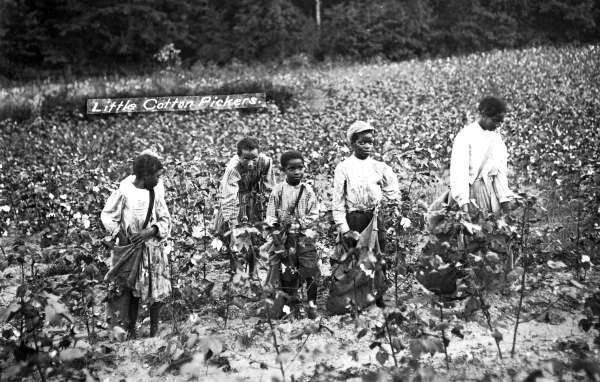While anti-worker laws were expanded in the early 1900s to fine, incarcerate, and relegate adult Floridians to indentured servitude, strong advocacy simultaneously led Florida to curtail child labor. The perils of child labor became front and center in the early 20th century in the wake of the second industrial (i.e., technical) revolution. This technological progress had a downside. It meant that more children were working in factories, canneries, street trades, and Florida’s cigar industry, while the employment of children in agriculture, like Florida’s citrus and strawberry fields, continued. It was not uncommon to find children as young as five and six working in these settings; some were paid meager wages, while others were deemed “apprentices” and not paid at all.
In response, social workers, alongside the national and Florida chapter of the Child Labor Committee, mobilized for policy intervention. The legislation they drafted, SB 160 and HB 296, focused on three broad aspects of child labor: minimum age requirements to work in select industries (which differed by gender); maximum hours and days worked; and penalties for violating any aspect of the new law. Labor groups, women and mothers’ clubs, and social service providers all backed the bills. Newspapers throughout the state, including the Florida Times-Union and The Tampa Times, spoke against them. Western Union representatives, which employed countless young children as messengers, were also opposed.
What ultimately passed was a significant piece of legislation, but it also included carveouts and was inequitable in more ways than one. For example, boys had fewer restrictions on their labor than girls, depending on the industry, reflecting the gender norms of the time. In addition, boys had to be 21 or up to work where alcohol was sold, but girls were not allowed to frequent or work in these establishments whatsoever. Girls had to be 16 or older to sell or distribute periodicals in public places, while boys only needed to be 10.
Moreover, due to this strong but loud opposition, the final 1913 law was amended in ways that favored select employers. Most significantly, none of the child labor provisions applied to domestic and agricultural work. In part, this is because parents needed their children to help out on family-run farms, but it also gave private employers license to exploit child labor for agricultural profits. Reminiscent of how white plantation owners falsely claimed Black people were more suited for picking cotton and sugar cane, adults claimed youth were best suited to pick strawberries because of their “nimble fingers” and ability to move in tight spaces. As late as the 1950s, Florida schools closed each winter so children could pick crops. The exclusion of domestic and agricultural work was also racially motivated, as the majority of that work in the South was carried out by Black children (and adults), an echo of the institution of slavery.
Florida’s child labor laws have been amended numerous times since and are now regulated by the Department of Business and Professional Regulation. The disparate work regulations by gender have been corrected. However, protections still do not apply to child domestic workers or legislative pages. Alarmingly, there has been a renewed push across states like Iowa, Arkansas, and Missouri to roll back existing child labor laws, despite a near-70 percent spike in violations since 2018, especially among immigrant youth working in dangerous factory and construction settings.

Image Source: Florida Memory
Image Description: Child working as a paperboy in Jacksonville, 1913
